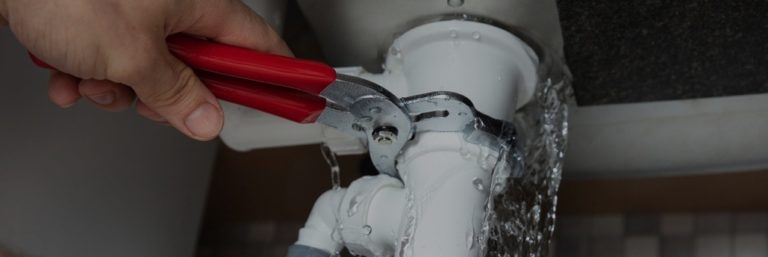Each person may have his or her own way of thinking about Finding hidden leaks.

Early detection of leaking water lines can mitigate a possible calamity. Some small water leaks might not be noticeable.
1. Check Out the Water Meter
Every residence has a water meter. Inspecting it is a proven manner in which helps you find leaks. For beginners, turn off all the water sources. Make certain nobody will flush, make use of the faucet, shower, run the washing machine or dish washer. From there, most likely to the meter and watch if it will transform. Considering that nobody is using it, there should be no activities. If it relocates, that shows a fast-moving leak. Also, if you spot no changes, wait an hour or two and also check back once more. This means you may have a slow leakage that can even be below ground.
2. Check Water Intake
If you detect unexpected adjustments, regardless of your consumption being the same, it implies that you have leakages in your plumbing system. An unexpected spike in your expense suggests a fast-moving leakage.
A constant increase every month, even with the exact same habits, shows you have a sluggish leak that's likewise gradually intensifying. Call a plumber to extensively inspect your property, especially if you really feel a warm location on your flooring with piping below.
3. Do a Food Coloring Examination
When it pertains to water intake, 30% originates from bathrooms. Test to see if they are running properly. Decline specks of food shade in the tank and wait 10 mins. There's a leak in between the tank and bowl if the color somehow infiltrates your bowl throughout that time without flushing.
4. Asses Exterior Lines
Do not fail to remember to inspect your outdoor water lines too. Needs to water permeate out of the link, you have a loose rubber gasket. One little leakage can throw away bunches of water as well as spike your water expense.
5. Analyze the scenario and inspect
Property owners should make it a habit to inspect under the sink counters and also inside cabinets for any type of bad odor or mold development. These two red flags suggest a leak so prompt interest is required. Doing regular evaluations, also bi-annually, can save you from a significant issue.
If you recognize your house is already old, maintain a watchful eye on your heating systems, pipes, pipelines etc. Look for discolorations as well as compromising as a lot of devices and also pipelines have a life span. They will additionally naturally weaken due to tear as well as wear. If you suspect dripping water lines in your plumbing system, do not await it to escalate. Call a specialist plumber today so you don't end up with a terrible mess in your house.
Early detection of leaking water lines can minimize a potential disaster. Some tiny water leaks may not be visible. Inspecting it is a guaranteed means that assists you find leakages. One tiny leak can waste lots of water as well as spike your water costs.
If you suspect leaking water lines in your plumbing system, do not wait for it to rise.
How to Know If Your Home Has a Hidden Leak
Water Meter Reveals Inexplicable Water Usage
If you’d like to test whether or not there’s a leak somewhere in your home, you can do this using your water meter. Here is how to conduct the test:
Don’t use any water in your home for at least 30 minutes; this also means not turning on faucets or water-using appliances.
Go outside, and check your water meter for activity.
If your water meter shows that there was activity, even though no one was using any water, this proves that there is a leak in your home.
Visible Mold or Mildew Growth
Leaks behind walls create moist, dark environments that allow mold and mildew to grow and thrive. Eventually, you might see mold growth forming on the wall closest to a hidden leak.
If mold is growing in an area that receives a high amount of moisture, such as a bathroom, it may simply be an indication that better ventilation is needed. However, if you see mold growth on a wall or the ceiling in an area where you would not expect, you probably have a hidden leak.
Musty, Mildew Odor
Sometimes you might not be able to see the mold or mildew that is growing as a result of a leak. However, the smell can give the problem away just as easily. If you catch a whiff of something musty, there’s a good chance that old water is collecting somewhere in your home that you can’t see.
Stained/Warped Walls, Ceilings, or Floors
When your home soaks up water, a variety of red flags can become visible, including ceiling stains, bubbling drywall, warped walls, and sagging floors. While these issues can be caused by excess humidity, they can also be signs that a pipe or plumbing connection has started leaking behind your walls.
Inexplicably High Water Bill
After a while, you get a general sense for what your water bill should be. If you own a pool or sprinkler system, your bill will tend to be higher during summer. However, if you receive a water bill that seems especially high, and you can’t figure out what caused it, then you may have a hidden leak somewhere that’s increasing your bill.
https://www.plumbingjoint.com/blog/2019/july/how-to-know-if-your-home-has-a-hidden-leak/

We were introduced to that write-up about Detecting hidden plumbing leaks from a good friend on a different web address. Kindly take the time to share this blog if you appreciated it. We take joy in reading our article about Locating water leaks.
Comments on “6 Ways to Locate Concealed Water Leakages in Your Residence”